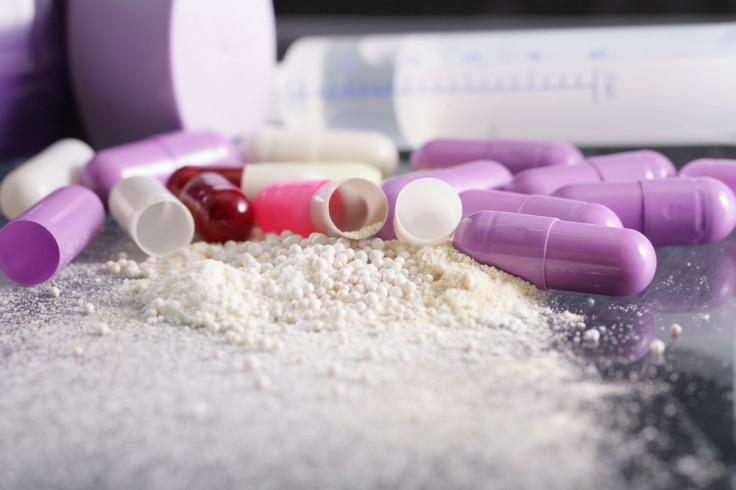Designer Drug Explosion: 348 New (And Largely Uncontrolled) Drugs Emerge In 94 Countries, Says UN

From New Zealand to the United States, synthetic drugs (also known as designer drugs) have emerged at a frightening rate. Manufacturers have been ramping up production, and international governments haven’t been able to keep up with regulations, according to the latest report from the United Nations Office on Drugs and Crime (UNODC).
The report highlights a growing public health issue, as the prevalence of new synthetic drugs, which are defined in the report as amphetamine-type stimulants and new psychoactive substances, reached a total of 348 throughout 94 countries last year. The majority of these drugs appeared between 2008 and 2013, at a rate too fast for governments to manage. While more common drugs like ecstasy and ketamine comprised the list, 28 percent of the new drugs were synthetic cannabinoids and 25 percent were synthetic cathinones.
Synthetic cannabinoids, as their name suggests, mimic the effects of marijuana, and go by the names K2 and Spice. They typically contain dried plant material coming from products like potpourri, but with designer chemicals added in. Synthetic cathinones are perhaps best known as bath salts. They’re similar to amphetamines, such as ecstasy (MDMA), producing feelings of euphoria and increased sociability. But they can also cause paranoia, agitation, and hallucinatory delirium. The problem with these drugs, is that nobody really knows what chemicals are being used in them, and they are continuously being tampered with.
The drugs have gained widespread popularity among younger groups around the world. In Central and South Asia, amphetamine-type substances have been more popular than synthetic cannabinoids and cocaine among certain age groups, while synthetic cannabinoids and cathinones have become more popular among those in the U.S. and Europe, The Guardian reported. In the U.S., synthetic cannabinoids have become the second most popular illegal drug among high school seniors. Yet, none of the 348 new substances were under international control by the end of 2013, the report said.
“The danger here is people are consuming new psychoactive substances without knowing that they’re doing so,” Natascha Eichinger, the UNODC’s synthetic drugs researcher, told The Telegraph. “So once these people have severe health issues, and they wish to receive treatment, they don’t actually know what they’ve taken.”
As many users take their drugs believing they’re more common illicit drugs like ecstasy, treatment centers are unable to act quickly. This issue becomes further complicated when drug dealers or users mix the drugs with other substances. Earlier this month, 120 people throughout Texas overdosed on synthetic marijuana. An investigation found that the drugs had all come from the same supplier. A few days later, the Drug Enforcement Administration (DEA) began a nationwide effort against the synthetic drug market in 25 states, by serving warrants, making arrests, and seizing upwards of $20 million in cash.
Meanwhile, the United Nations is looking for an internationally-focused route toward drug control. “The United Nations is pursuing peaceful solutions to the world drug problem founded on a balanced approach between demand and supply that embraces human rights, scientific evidence, and the overriding principle of protecting people’s health,” a UNODC spokesperson wrote in an email statement regarding a separate drug report from the London School of Economics, according to The Verge. “Such efforts are entirely in line with the International Drug Control Conventions, which were created to protect the health and welfare of people.”



























